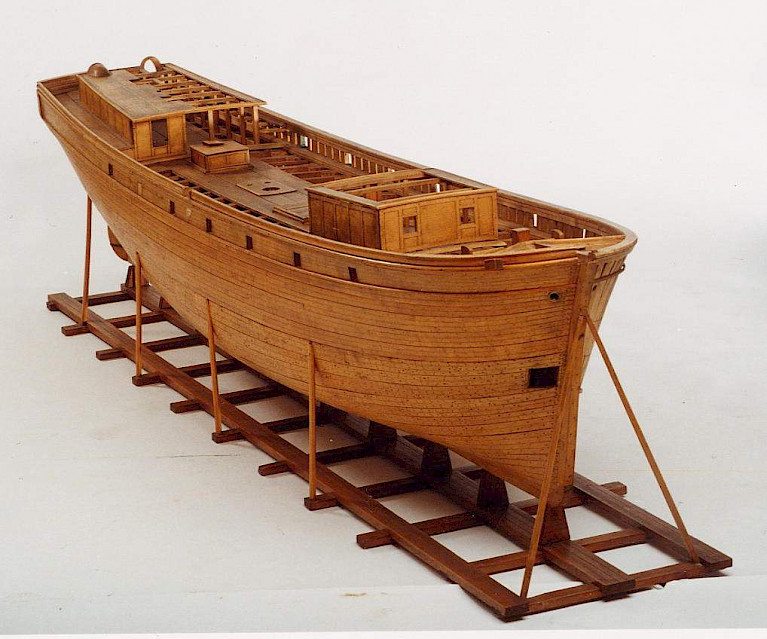
RMM114
Model of a wooden sailing ship
The model represents a three-masted barque or fullrigger with a capacity of 400 to 500 ton. The left or port side is without side planking, and the sturdy frame ribs are clearly visible. There is hardly any void between the bow frames; they touch each other almost all their length.
The weather deck is left without deck planking. You can see the tween-deck frames clearly. The model shows how the masts reach down to the keel blank. Looking through the deck, you can also distinguish the so-called knees made of the rootstock wood.
The forecastle is fairly small, indicating that the crew dwelled in the two deck houses. This was common in small and medium-sized ships. Most large sailing ships featured crew accommodation below the forecastle. There is a manual windlass behind the forecastle.
The upper starboard side planking is complete. The lower part is without the outer layer planking. Double bottom planking was typical in the Nordic countries. It protected the ship from the shipworm (Teredo navalis) that lives in saline waters. More commonly, the bottom was covered with thin copper plates to keep away the shipworm and such growth as phytobenthos that slowed down the speed.
But copper was expensive. It was more economical to cover the bottom with a renewable layer of cheap planks. The shipworm never digs very deep. It was allowed to eat the outer planking. Ships were regularly fastened to careening berths in the harbours; big jiggers were fixed to lower masts to hoist a ship so that half of its bottom was exposed.
The bottom could now be serviced by first removing the outer skin. The actual bottom was carefully caulked with stuffing made of jute, hemp and rope; this was called oakum. The joints of timber were packed tight with tarry oakum using a so-called caulking iron. The bottom was tarred and pitched before new outer planking was nailed. When one half was finished, the ship was turned and the work started on the other half.
The model also features another Nordic detail. There are small hatches at both ends of the frame, near the waterline. These were used for loading the ship while wintering. An effort was made to bring the ships to home port and tie them together in the autumn before the sea froze over. As the ports were almost invariably along estuaries, it was easy to haul timber cargo alongside a ship and load it through the hatches. The hatches were then closed and carefully secured.
The ships could sail immediately when spring came. With a bit of luck, three voyages to Germany or Denmark could be made before the sea froze again in the autumn.